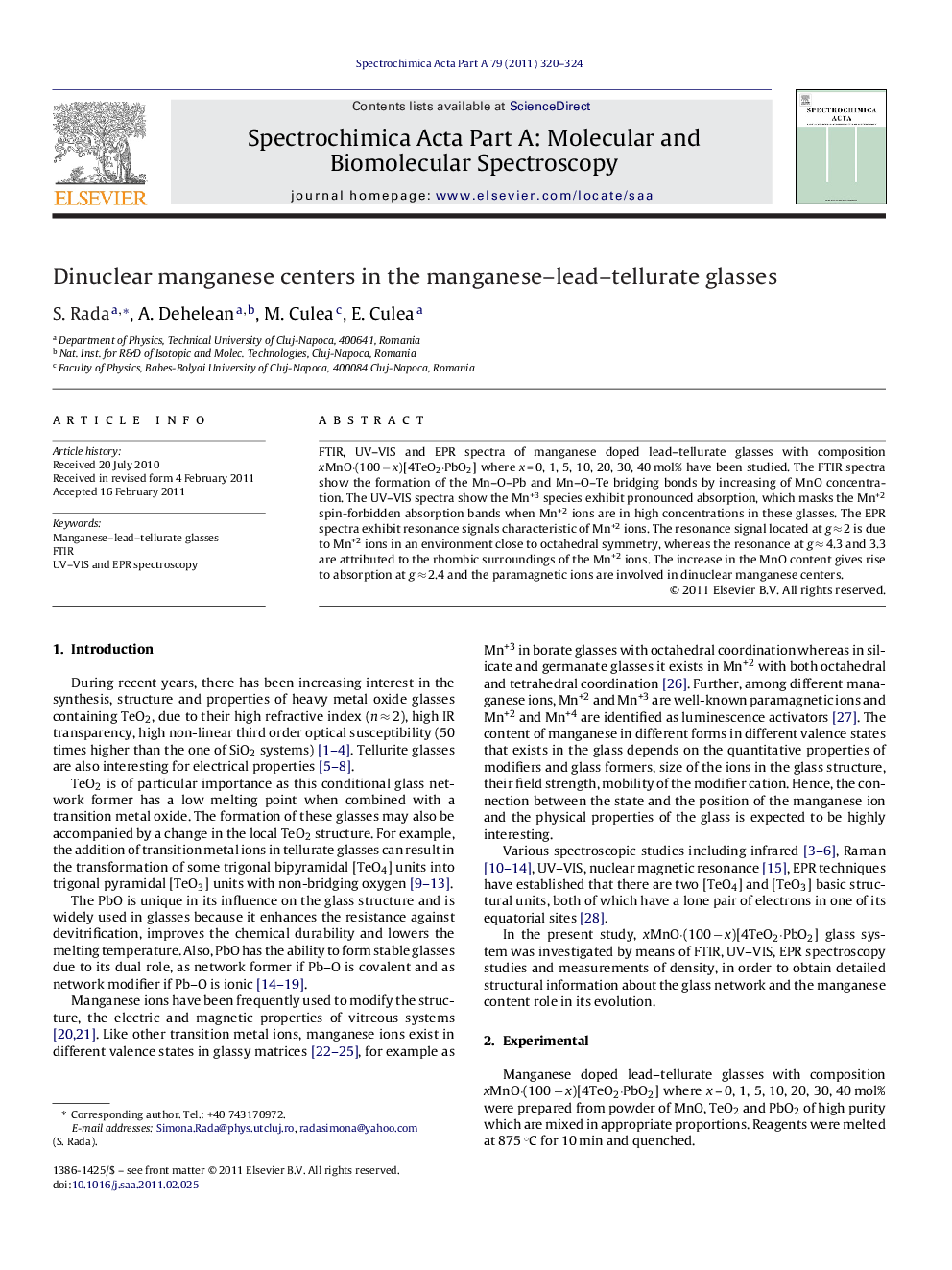| کد مقاله | کد نشریه | سال انتشار | مقاله انگلیسی | نسخه تمام متن |
|---|---|---|---|---|
| 1235723 | 968852 | 2011 | 5 صفحه PDF | دانلود رایگان |

FTIR, UV–VIS and EPR spectra of manganese doped lead–tellurate glasses with composition xMnO·(100 − x)[4TeO2·PbO2] where x = 0, 1, 5, 10, 20, 30, 40 mol% have been studied. The FTIR spectra show the formation of the Mn–O–Pb and Mn–O–Te bridging bonds by increasing of MnO concentration. The UV–VIS spectra show the Mn+3 species exhibit pronounced absorption, which masks the Mn+2 spin-forbidden absorption bands when Mn+2 ions are in high concentrations in these glasses. The EPR spectra exhibit resonance signals characteristic of Mn+2 ions. The resonance signal located at g ≈ 2 is due to Mn+2 ions in an environment close to octahedral symmetry, whereas the resonance at g ≈ 4.3 and 3.3 are attributed to the rhombic surroundings of the Mn+2 ions. The increase in the MnO content gives rise to absorption at g ≈ 2.4 and the paramagnetic ions are involved in dinuclear manganese centers.
Figure optionsDownload as PowerPoint slideHighlights
► The results reported in the present investigations would provide a structural evolution from structural units involving Mn+2 ions in well- defined neighborhoods to structural units containing dinuclear manganese centers, Mn2II,III.
► The Mn+3 species exhibit pronounced UV absorption, which masks the Mn+2 spin-forbidden absorption bands when Mn+2 ions are in high concentrations in these glasses.
Journal: Spectrochimica Acta Part A: Molecular and Biomolecular Spectroscopy - Volume 79, Issue 2, July 2011, Pages 320–324